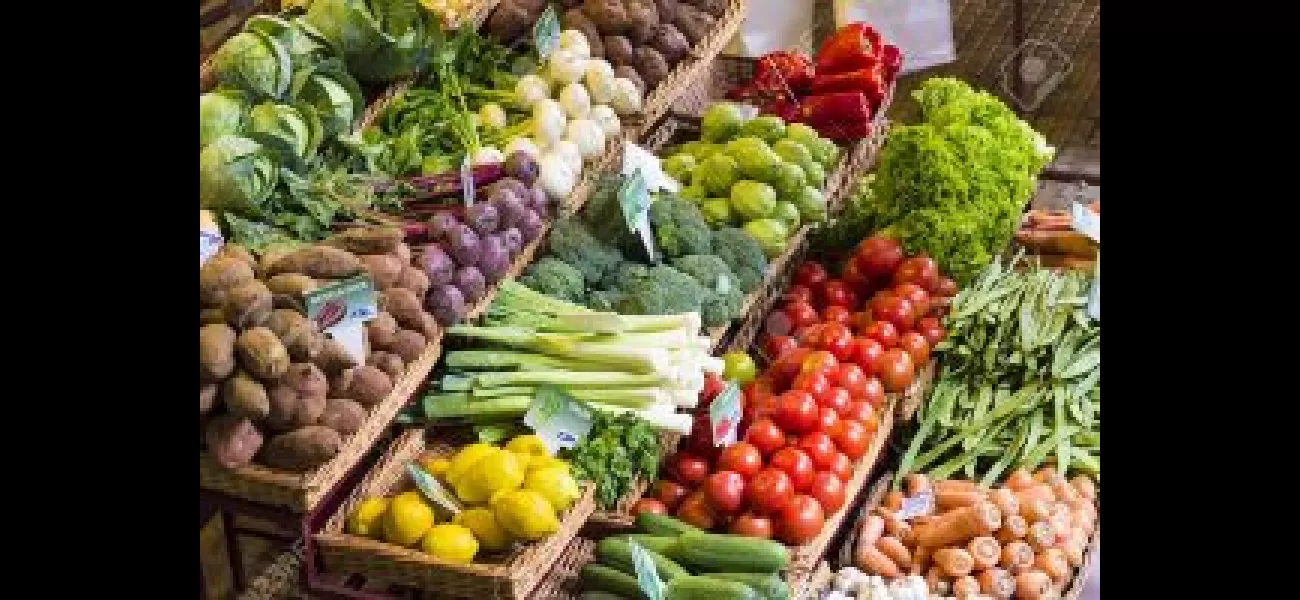In April, wholesale inflation reached its highest level in 13 months.
In New Delhi, wholesale prices increased to a 13-month high of 1.26% in April due to higher food prices, potentially leading to unchanged interest rates in the upcoming policy review by the RBI.
May 14th 2024.

New Delhi: In April, the wholesale inflation reached its highest point in 13 months, hitting 1.26%. This surge was largely driven by a rise in food prices, particularly in the vegetable category. As a result, the Reserve Bank of India is expected to maintain its current interest rates during its upcoming policy review in the following month.
The wholesale price index (WPI) based inflation has been steadily increasing for the past two months. In February, it was at 0.20%, and then rose to 0.53% in March. In comparison, WPI inflation was at 0.79% in April of the previous year. This April, the WPI hit a 13-month high, with the last peak occurring in March of 2023 when inflation reached 1.41%.
The Ministry of Commerce & Industry released a statement on Tuesday, stating that the positive inflation rate in April 2024 was primarily due to the rising prices of food articles, electricity, crude petroleum, natural gas, and the manufacturing of food products and other goods. According to the data, there was a 7.74% increase in food inflation in April, compared to 6.88% in March. In the fuel and power category, inflation rose to 1.38% in April from 0.77% in the previous month.
ICRA Chief Economist Aditi Nayar believes that WPI inflation is highly influenced by global commodity prices, which have been on the rise year after year. She stated, "Many commodity prices have shown an upward trend in the past few months, including crude oil prices in April. Based on the current commodity prices, I expect the WPI to continue to rise and possibly exceed 2% in the next two months of May and June." ICRA has forecasted an average WPI of 3.3% for the current fiscal year.
In April, the inflation rate for vegetables was at an alarming 23.60%, up from 19.52% in March. In the same month, potato inflation skyrocketed to 71.97% from 52.96% in March, while onion inflation rose to 59.75% from 56.99% in the previous month. Sanjeev Agrawal, President of PHD Chamber of Commerce and Industry, predicts that food inflation will stabilize by September/October 2024 as the market will be supplied with new crops.
The data also shows that there was a deflation of 0.42% in manufactured products in April, compared to the 0.85% deflation in March. This increase in the April WPI contrasts with the retail inflation data for the same month. The Reserve Bank of India primarily considers retail inflation when making monetary policy decisions. In April, retail inflation decreased to a 11-month low of 4.83%. Last month, the RBI maintained its current interest rates for the seventh consecutive time, citing vigilance towards potential risks of food inflation.
The next meeting of the RBI's interest rate setting panel is scheduled for June 5-7. Nayar believes that based on the current growth-inflation dynamics, there is a slim chance of a change in monetary policy stance during the June meeting. She stated, "We are still waiting for the fourth quarter GDP growth estimate, which is expected later this month. The Monsoon's performance will also impact the MPC's decision. An interest rate cut is more likely in the second half of the fiscal year, possibly in October-December."
The wholesale price index (WPI) based inflation has been steadily increasing for the past two months. In February, it was at 0.20%, and then rose to 0.53% in March. In comparison, WPI inflation was at 0.79% in April of the previous year. This April, the WPI hit a 13-month high, with the last peak occurring in March of 2023 when inflation reached 1.41%.
The Ministry of Commerce & Industry released a statement on Tuesday, stating that the positive inflation rate in April 2024 was primarily due to the rising prices of food articles, electricity, crude petroleum, natural gas, and the manufacturing of food products and other goods. According to the data, there was a 7.74% increase in food inflation in April, compared to 6.88% in March. In the fuel and power category, inflation rose to 1.38% in April from 0.77% in the previous month.
ICRA Chief Economist Aditi Nayar believes that WPI inflation is highly influenced by global commodity prices, which have been on the rise year after year. She stated, "Many commodity prices have shown an upward trend in the past few months, including crude oil prices in April. Based on the current commodity prices, I expect the WPI to continue to rise and possibly exceed 2% in the next two months of May and June." ICRA has forecasted an average WPI of 3.3% for the current fiscal year.
In April, the inflation rate for vegetables was at an alarming 23.60%, up from 19.52% in March. In the same month, potato inflation skyrocketed to 71.97% from 52.96% in March, while onion inflation rose to 59.75% from 56.99% in the previous month. Sanjeev Agrawal, President of PHD Chamber of Commerce and Industry, predicts that food inflation will stabilize by September/October 2024 as the market will be supplied with new crops.
The data also shows that there was a deflation of 0.42% in manufactured products in April, compared to the 0.85% deflation in March. This increase in the April WPI contrasts with the retail inflation data for the same month. The Reserve Bank of India primarily considers retail inflation when making monetary policy decisions. In April, retail inflation decreased to a 11-month low of 4.83%. Last month, the RBI maintained its current interest rates for the seventh consecutive time, citing vigilance towards potential risks of food inflation.
The next meeting of the RBI's interest rate setting panel is scheduled for June 5-7. Nayar believes that based on the current growth-inflation dynamics, there is a slim chance of a change in monetary policy stance during the June meeting. She stated, "We are still waiting for the fourth quarter GDP growth estimate, which is expected later this month. The Monsoon's performance will also impact the MPC's decision. An interest rate cut is more likely in the second half of the fiscal year, possibly in October-December."
[This article has been trending online recently and has been generated with AI. Your feed is customized.]
[Generative AI is experimental.]
0
0
Submit Comment





